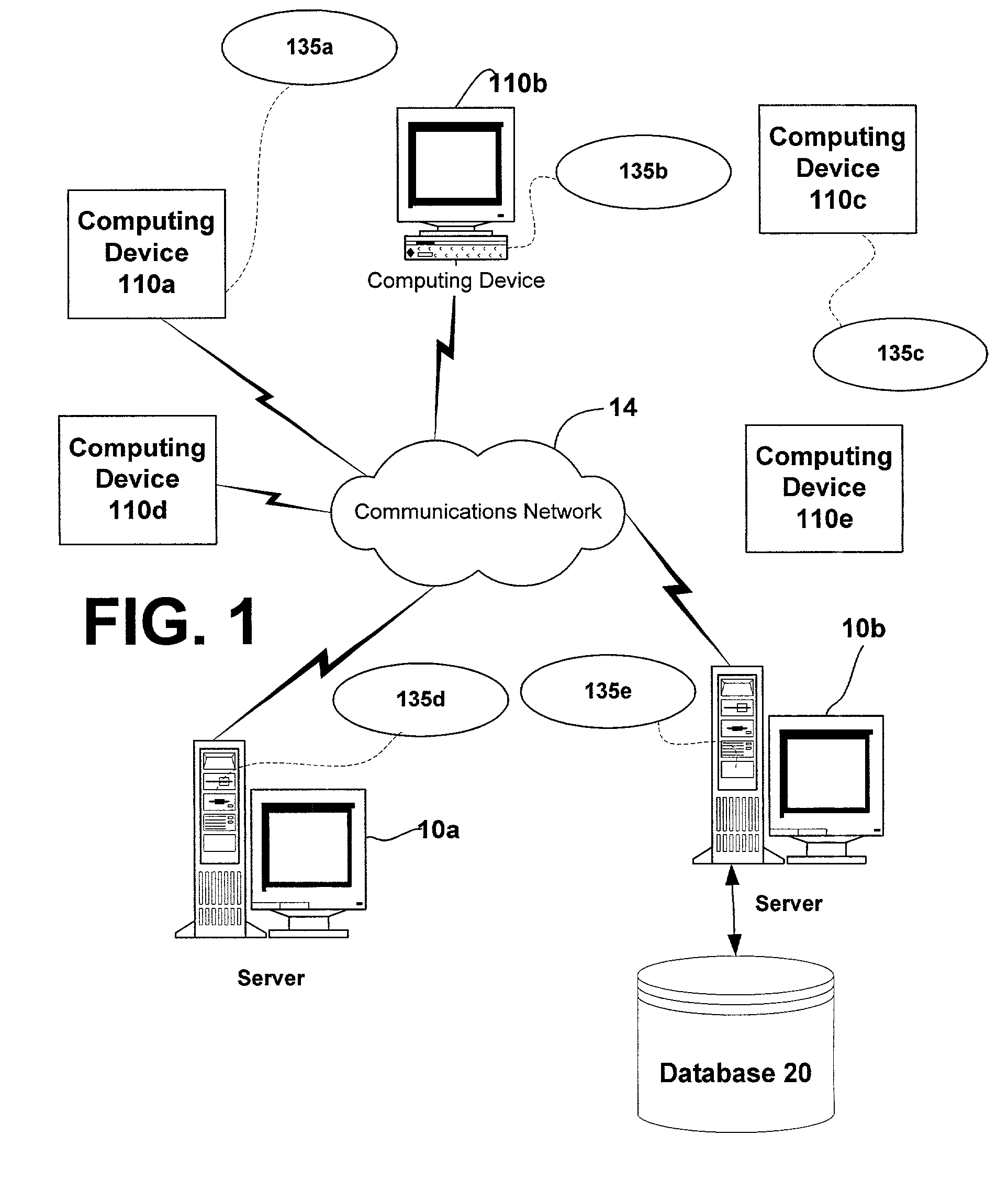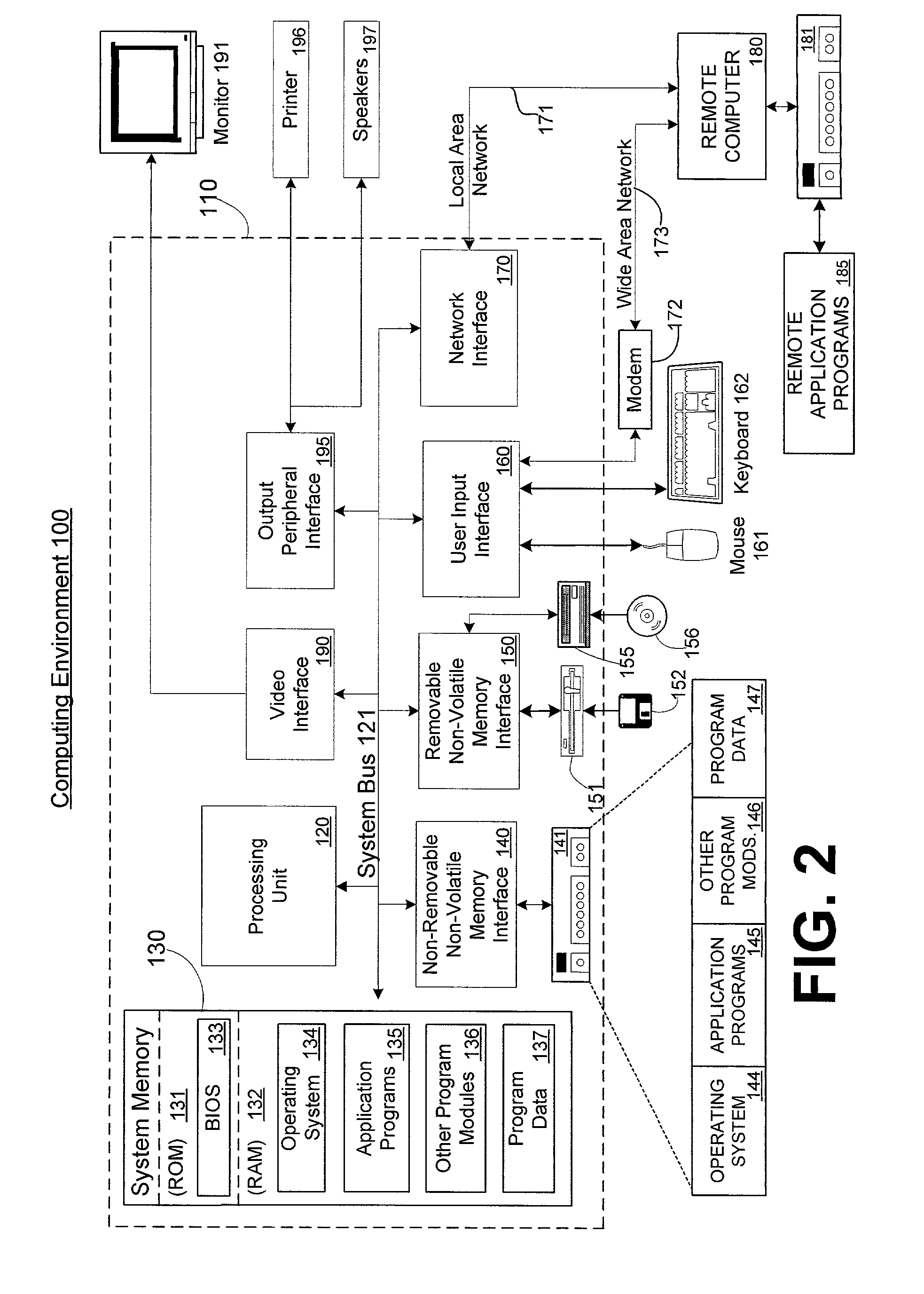System and methods for providing a declarative syntax for specifying SOAP-based web services
a declarative syntax and web service technology, applied in the field of system and method, can solve the problems of increasing complexity of programming tasks, concomitant learning curve and degree of care, and inability to understand programs, program objects or program outputs at or capable of reaching a given destination, so as to reduce the amount of coding required, simplify the creation of soap-based web services, and reduce the number and complexity of considerations
- Summary
- Abstract
- Description
- Claims
- Application Information
AI Technical Summary
Benefits of technology
Problems solved by technology
Method used
Image
Examples
first example
A FIRST EXAMPLE
[0099]Exemplary code 600 of FIG. 6 illustrates the implementation of a SOAP Method with integral types as parameters. In this case, “method1” has two parameters named “bInput” and “bOutput”. In the class declaration, the optional “name” parameter of the “soap_method”attribute has been omitted. When omitted, the “name” defaults to the name of the method, which in this case is “method1.” The optional “soap_header” attribute has also been omitted, an exemplary use of which is described below.
[0100]When processing code 600, the parser sees the object attribute which causes the subsequent_interface to be a COM interface. Embedded IDL is only allowed in COM interfaces which are characterized by being annotated with the “object”, “dual” or “dispinterface” attributes.
[0101]Then, the parser sees the “method1” declaration “[id(1)] HRESULT method1([in] bool bInput, [out, retval] bool *bOutput);” and parses the “in” attribute for the “bInput”parameter and the “out” and “retval” p...
second example
A SECOND EXAMPLE
[0116]Exemplary code 900 of FIG. 9 illustrates the implementation of a SOAP Method with an integral type SOAP Header. Code 900 is similar to code 600 as in the first example, with the addition of the “Header1” member variable of CClass, and the “soap_header” attribute on “method1.”
[0117]In this case, “method1” has two parameters named “bInput” and “bOutput”. In the class declaration, the optional “name” parameter of the “soap_method” attribute has been omitted. When omitted, the “name” defaults to the name of the method which in this case is “method1.” The optional soap_header attribute has been added.
[0118]When processing, the parser sees the object attribute which causes the subsequent_interface to be a COM interface. Embedded IDL is only allowed in COM interfaces which are characterized by being annotated with the “object”, “dual” or “dispinterface” attributes. Then, the parser sees the “method1” declaration “[id(1)] HRESULT method1([in] bool bnput, [out, retval] ...
third example
A THIRD EXAMPLE
[0136]Exemplary code 1200 of FIG. 12 illustrates the implementation of a SOAP Method with complex type parameters. This example illustrates how arrays and complex types e.g., structs, enums, etc., are processed. Code 1200 is similar to code 600 of the first example, with the parameters of method1 changed to an enum and a struct that has an array as a member.
[0137]The interaction between the compiler and the attribute provider is the same as for the first example, except for the description returned by the compiler when queried for information about “method1”: ([in] LTestStruct;PtIn;[out,retval] ETestEnum; *PeOut;)THRESULT;. This description “LTestStruct” identifies the “tIn” parameter as type “TestStruct”, which is a struct (the “L” prefix); and the parameter “eOut” parameter as type “TestEnum”, which is an enum (the “E” prefix). When the attribute provider encounters these definitions while parsing the description, the attribute provider queries the compiler for info...
PUM
 Login to View More
Login to View More Abstract
Description
Claims
Application Information
 Login to View More
Login to View More - R&D
- Intellectual Property
- Life Sciences
- Materials
- Tech Scout
- Unparalleled Data Quality
- Higher Quality Content
- 60% Fewer Hallucinations
Browse by: Latest US Patents, China's latest patents, Technical Efficacy Thesaurus, Application Domain, Technology Topic, Popular Technical Reports.
© 2025 PatSnap. All rights reserved.Legal|Privacy policy|Modern Slavery Act Transparency Statement|Sitemap|About US| Contact US: help@patsnap.com



